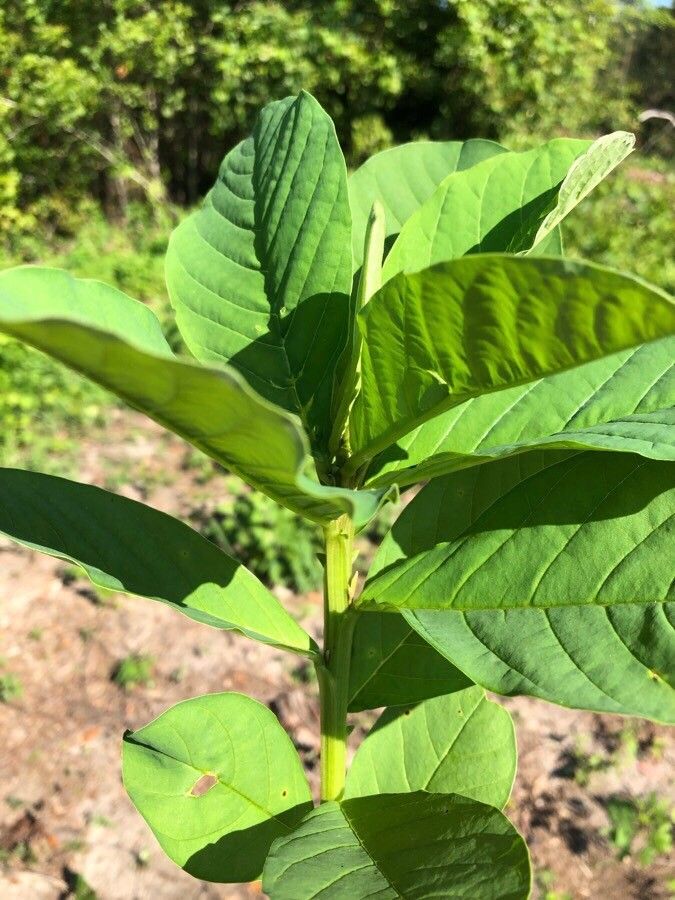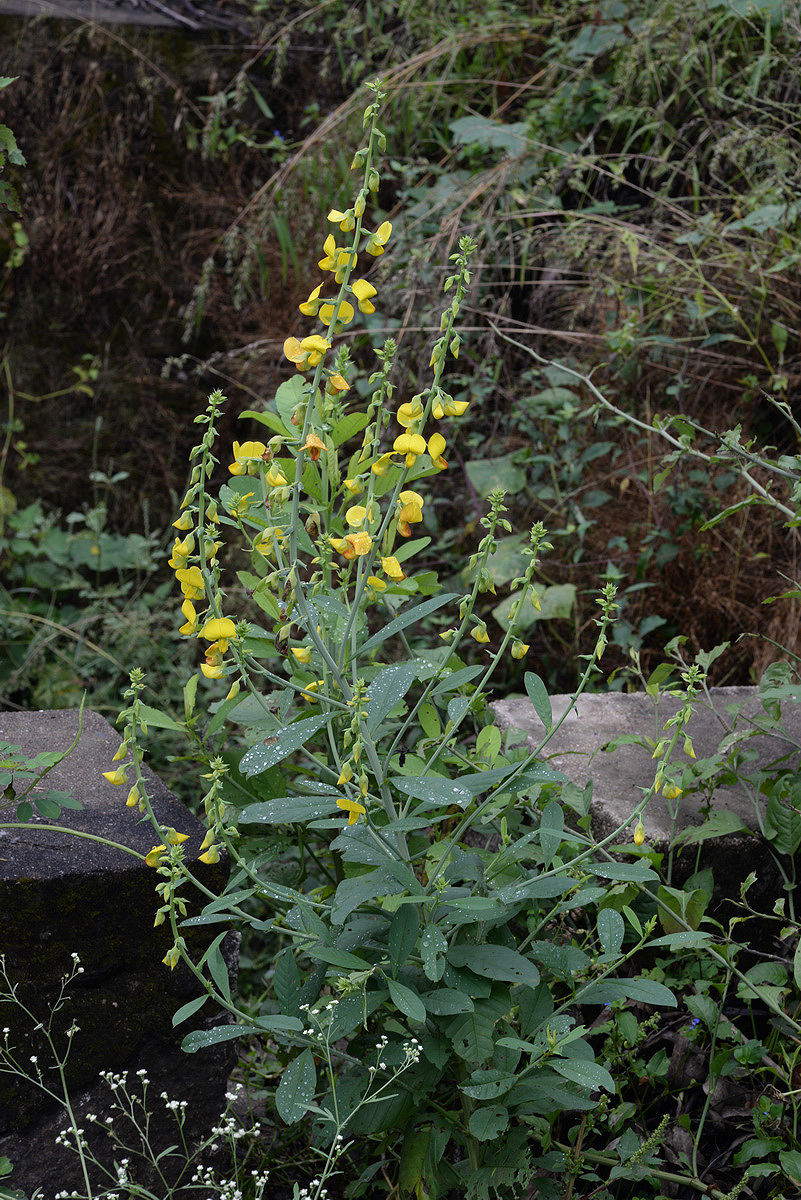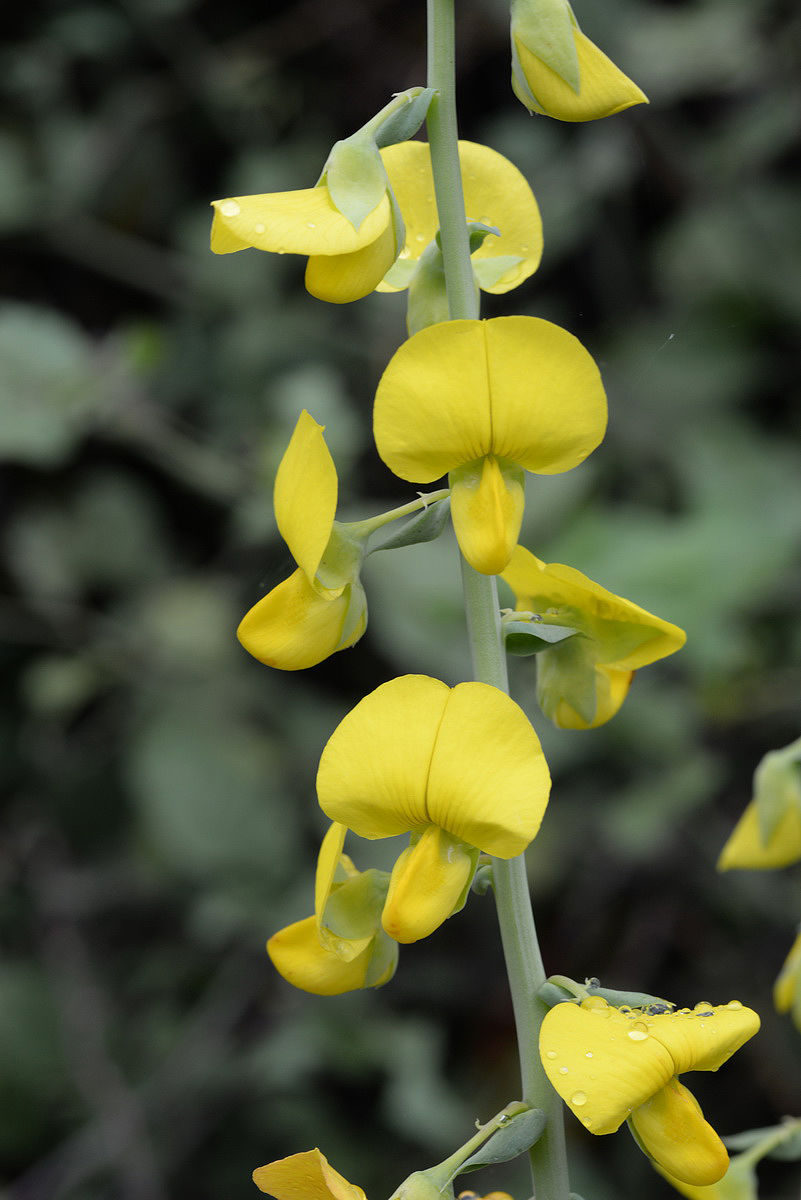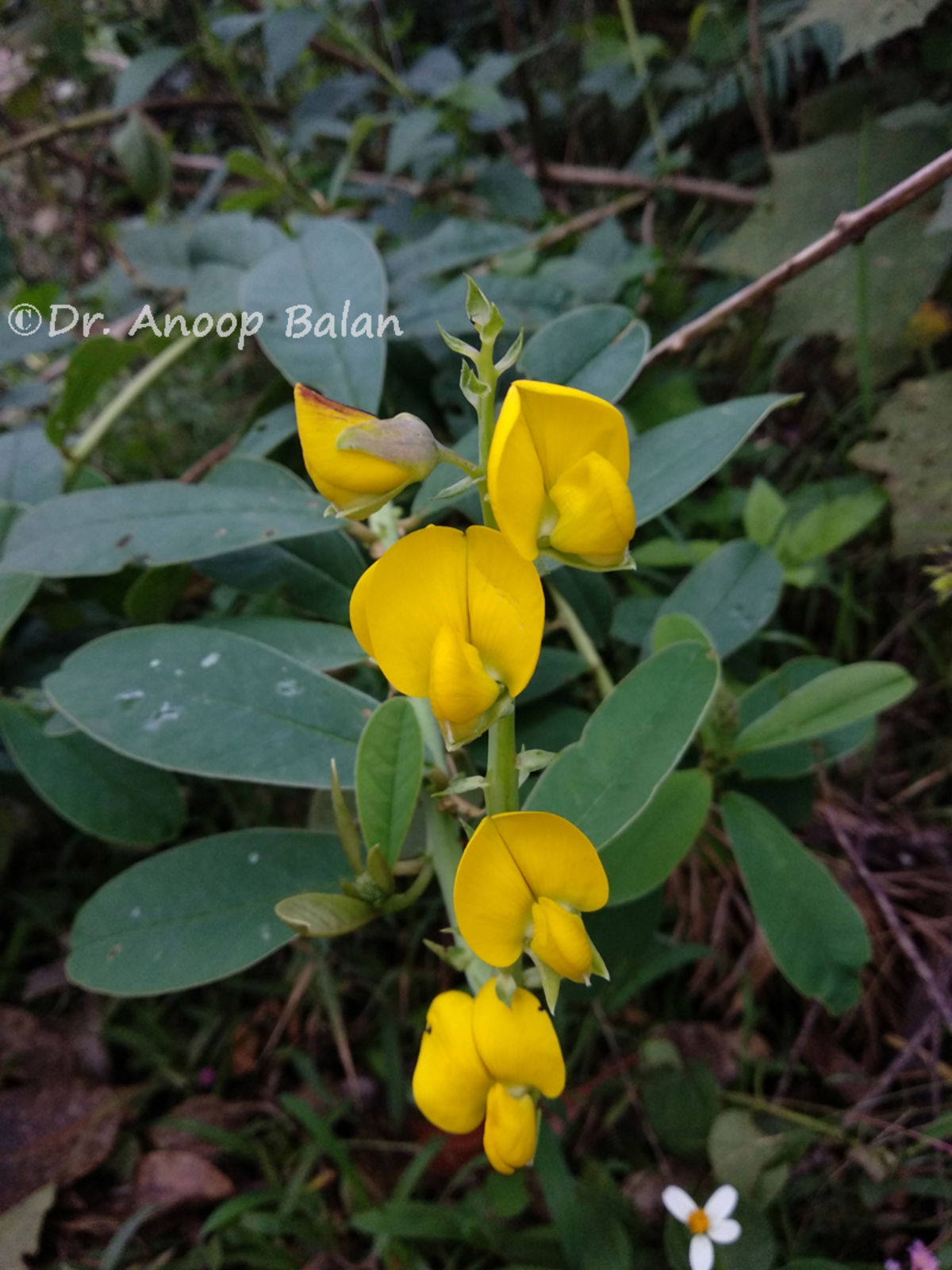Showy Rattlebox
crotalaria spectabilis
Also known as: ["Rattlebox","Showy Crotalaria"]
Overview
A leguminous plant known for its bright yellow flowers and toxic seeds containing pyrrolizidine alkaloids.
Benefits & Perks
["long-flowering","wildlife attractant (bees, butterflies, birds)"]
Botanical Classification
| Phylum: | Magnoliophyta |
| Class: | Magnoliopsida |
| Order: | Fabales |
| Family: | Fabaceae |
| Genus: | Crotalaria |
| Botanical Name: | Crotalaria spectabilis |
Plant Characteristics
Basic Information
- Category: Flowers
- Suitable Location: outdoor garden bed in temperate to subtropical regions
- Suitable For:
- Is Weed: No
- Allergenicity: moderate
Environmental Needs
- Climate: {"temperatureRange":"10–35°C"}
- Hardiness: {"zones":"8–11"}
- Misting: rarely required
- Drainage: Fast-draining to prevent waterlogging.
- Soil Type: Well-draining, loamy soil with added organic matter; can tolerate poor soils but thrives with enrichment.
Maintenance Level
- Maintenance Level: moderate
- Toughness Level: moderate
- Pruning Frequency: Light pruning can be done anytime; major pruning in late winter or early spring before new growth begins.
- Pruning Intensity: Light to moderate; avoid heavy pruning unless necessary to control size or shape.
Care Details
Ideal Sunlight Coverage:
Full sun (6–8 hours of direct sunlight daily); tolerates partial shade but may flower less.
Sunlight Tolerance Tips:
Acclimate plants gradually to intense sunlight; protect from harsh midday sun in hot climates; ensure adequate ventilation if grown indoors.
Care Requirements
Care Difficulty
moderatemoderate
Sunlight
full sun to partial shade
Rotate plant for even light exposure; use sheer curtains to filter intense sun; avoid sudden light changes.
Watering
every 7–10 days during active growth, reduce in winter
Water thoroughly until it drains from the bottom; allow soil to dry between waterings; avoid overhead watering to prevent fungal issues.
Soil
well-drained, loamy soil with moderate organic matter
pH: Slightly acidic to neutral (pH 6.0–7.0).
Avoid heavy clay soils; use raised beds for better drainage; top-dress with compost annually.
Temperature
Warm conditions (65–85°F / 18–29°C); prefers stable temperatures; sensitive to frost.
Avoid placing near drafty windows; maintain consistent room temperature; protect from sudden temperature swings.
Fertilizing
every 4–6 weeks during growing season
Apply fertilizer after watering to prevent root burn; flush soil occasionally to prevent salt buildup; reduce frequency in dormant periods.
Propagation
Methods
Stem cuttings or seed; stem cuttings root readily in warm conditions.
Step-by-Step Propagation Guide
- Take a 4–6 inch cutting.
- Remove lower leaves.
- Dip in rooting hormone.
- Plant in moist medium.
- Keep warm and humid.
Best Time: Spring or early summer when the plant is actively growing.
Environment
Warm (70–75°F / 21–24°C), humid, and bright indirect light.
Medium
Well-draining mix of perlite and peat moss or cactus mix.
Hormone
Rooting hormone is beneficial but not strictly necessary.
Timeline
Roots may develop in 2–4 weeks; new growth appears in 6–8 weeks.
Tools Needed
Pruning shears, rooting hormone, small pots, misting spray bottle.
Quick Tips
Use healthy, non-flowering stems; maintain high humidity with a plastic bag; avoid direct sunlight during rooting.
Pruning & Repotting
Pruning Guide
Method
Pinch back tips to encourage branching; cut just above a leaf node or bud.
Pruning Plan
Prune to maintain shape, encourage bushier growth, and remove spent flowers or damaged stems.
Tools
Clean, sharp pruning shears or scissors.
Checklist
Sanitize tools; prune dead or diseased stems; shape as desired; dispose of clippings properly.
Repotting Guide
Best Season
Early spring before active growth begins.
Pot Size
Choose a pot one size larger (1–2 inches wider in diameter) than the current one.
Method
Remove plant gently; trim any circling roots; place in a new pot with fresh soil; water lightly after repotting.
Suggestions
Repot every 2–3 years or when roots fill the pot; beneficial for container-grown plants to refresh soil and provide space.
Checklist
Select appropriate pot; prepare fresh soil mix; handle roots carefully; water after repotting.
Advanced Care Tips
Watering Mastery
Watering Checklist
Check soil moisture; water deeply; ensure drainage; adjust for season.
How to Apply Water Properly
Water directly at the root zone, ensuring even moisture distribution; water early in the morning to minimize evaporation; ensure excess water drains away to prevent waterlogging.
Watering Schedule Tips
Water deeply once the top inch of soil is dry; reduce frequency in winter to prevent root rot.
Soil Improvement
Add compost or well-rotted manure for fertility; mix in perlite or sand for drainage; ensure good aeration.
Temperature Stress Management
Signs of Temperature Issues
Wilting, yellowing leaves, stunted growth, or bud drop in extreme heat or cold.
Cold Stress
Growth slows or halts; leaves may turn yellow or brown; risk of frost damage or death in freezing temperatures.
Solution: Move to a warmer location; provide frost protection; avoid overwatering in cold conditions.
Hot Stress
Leaves may scorch, wilt, or drop; growth may slow; flowers may fade quickly.
Solution: Provide shade during peak heat; increase watering; use mulch to retain soil moisture.
Fertilizing Guide
Fertilizing Checklist
Check fertilizer type; dilute correctly; apply during active growth; avoid winter feeding.
Fertilizing Method
Use balanced liquid fertilizer diluted to half strength every 4–6 weeks during growing season (spring/summer); avoid fertilizing in winter.
Common Problems & Solutions
Toxicity Warning
Cats
ToxicCrotalaria spectabilis is toxic to cats due to its pyrrolizidine alkaloid content, which can cause significant liver damage. Cats are particularly sensitive to these compounds.
⚠️ Symptoms:
🌿 Toxic Parts:
⚡ Toxic If:
if eaten
Dogs
ToxicThe pyrrolizidine alkaloids in Crotalaria spectabilis are toxic to dogs, causing hepatotoxicity and potential liver damage. Chronic ingestion can lead to severe liver conditions.
⚠️ Symptoms:
🌿 Toxic Parts:
⚡ Toxic If:
if eaten
Humans
ToxicCrotalaria spectabilis contains pyrrolizidine alkaloids, which are hepatotoxic and can cause liver damage upon ingestion. Chronic exposure may lead to severe liver fibrosis and cirrhosis.
⚠️ Symptoms:
🌿 Toxic Parts:
⚡ Toxic If:
if eaten
Frequently Asked Questions
Q: Is Crotalaria spectabilis toxic to humans?
A: Yes, it is toxic due to pyrrolizidine alkaloids in its seeds.
Q: Does this plant attract wildlife?
A: Yes, it attracts bees, butterflies, and birds.
Q: Is this plant suitable for beginners?
A: No, due to its moderate care difficulty and toxicity.
Quick Reference
| Family: | Fabaceae |
| Care: | moderate |
| Light: | full sun to partial shade |
| Water: | every 7–10 days during activ |
Get Expert Care Tips
Download the Plantious app for personalized care reminders and plant identification!
Google Play App Store








